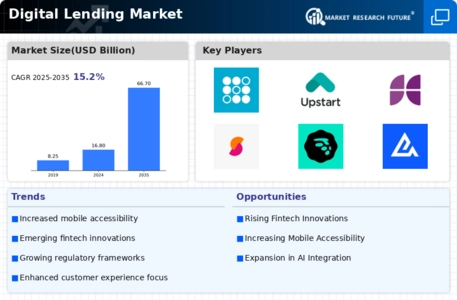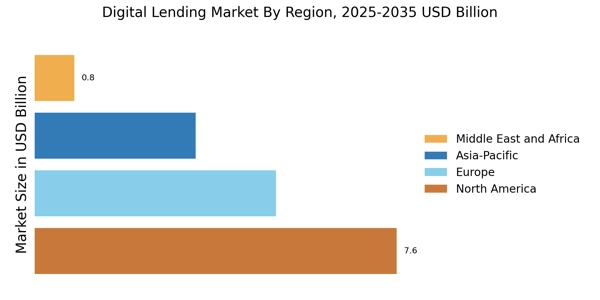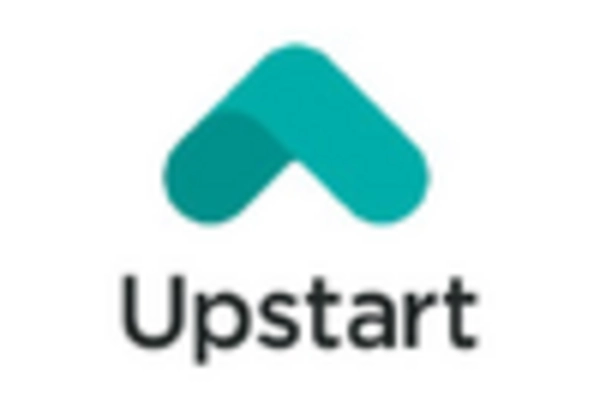The Digital Lending Market is currently characterized by a dynamic competitive landscape, driven by technological advancements and evolving consumer preferences. Key players such as LendingClub (US), SoFi (US), and Upstart (US) are at the forefront, each adopting distinct strategies to enhance their market positioning. LendingClub (US) focuses on expanding its product offerings through innovative financial solutions, while SoFi (US) emphasizes a comprehensive suite of services that includes personal loans, investment options, and insurance. Upstart (US), on the other hand, leverages artificial intelligence to refine its credit assessment processes, thereby enhancing customer experience and operational efficiency. Collectively, these strategies contribute to a competitive environment that is increasingly shaped by technological integration and customer-centric approaches.
The business tactics employed by these companies reflect a broader trend towards localization and optimization within the market. The Digital Lending Market appears moderately fragmented, with numerous players vying for market share. However, the influence of major companies is substantial, as they set benchmarks for service quality and innovation. The collective actions of these key players not only drive competition but also foster an environment where smaller entities must adapt rapidly to remain relevant.
In August 2025, LendingClub (US) announced a strategic partnership with a leading fintech firm to enhance its digital platform capabilities. This collaboration aims to streamline the loan application process, thereby reducing approval times and improving customer satisfaction. Such a move underscores LendingClub's commitment to leveraging technology to maintain its competitive edge in a rapidly evolving market.
In September 2025, SoFi (US) launched a new feature that allows users to manage their loans and investments through a single app interface. This integration is significant as it reflects SoFi's strategy to create a seamless user experience, potentially increasing customer retention and attracting new users. By consolidating services, SoFi positions itself as a one-stop financial solution, which may enhance its competitive standing.
In July 2025, Upstart (US) expanded its operations into the European market, marking a pivotal moment in its growth strategy. This expansion is indicative of Upstart's ambition to tap into new customer bases and diversify its revenue streams. By entering Europe, Upstart not only broadens its geographical footprint but also positions itself to leverage its AI-driven credit assessment model in a new regulatory environment, which could yield substantial long-term benefits.
As of October 2025, the Digital Lending Market is witnessing trends that emphasize digitalization, sustainability, and the integration of artificial intelligence. Strategic alliances among key players are increasingly shaping the competitive landscape, fostering innovation and enhancing service delivery. Looking ahead, it is likely that competitive differentiation will evolve, with a pronounced shift from price-based competition to a focus on technological innovation, customer experience, and supply chain reliability. This evolution suggests that companies that prioritize these aspects may emerge as leaders in the Digital Lending Market.


















Leave a Comment